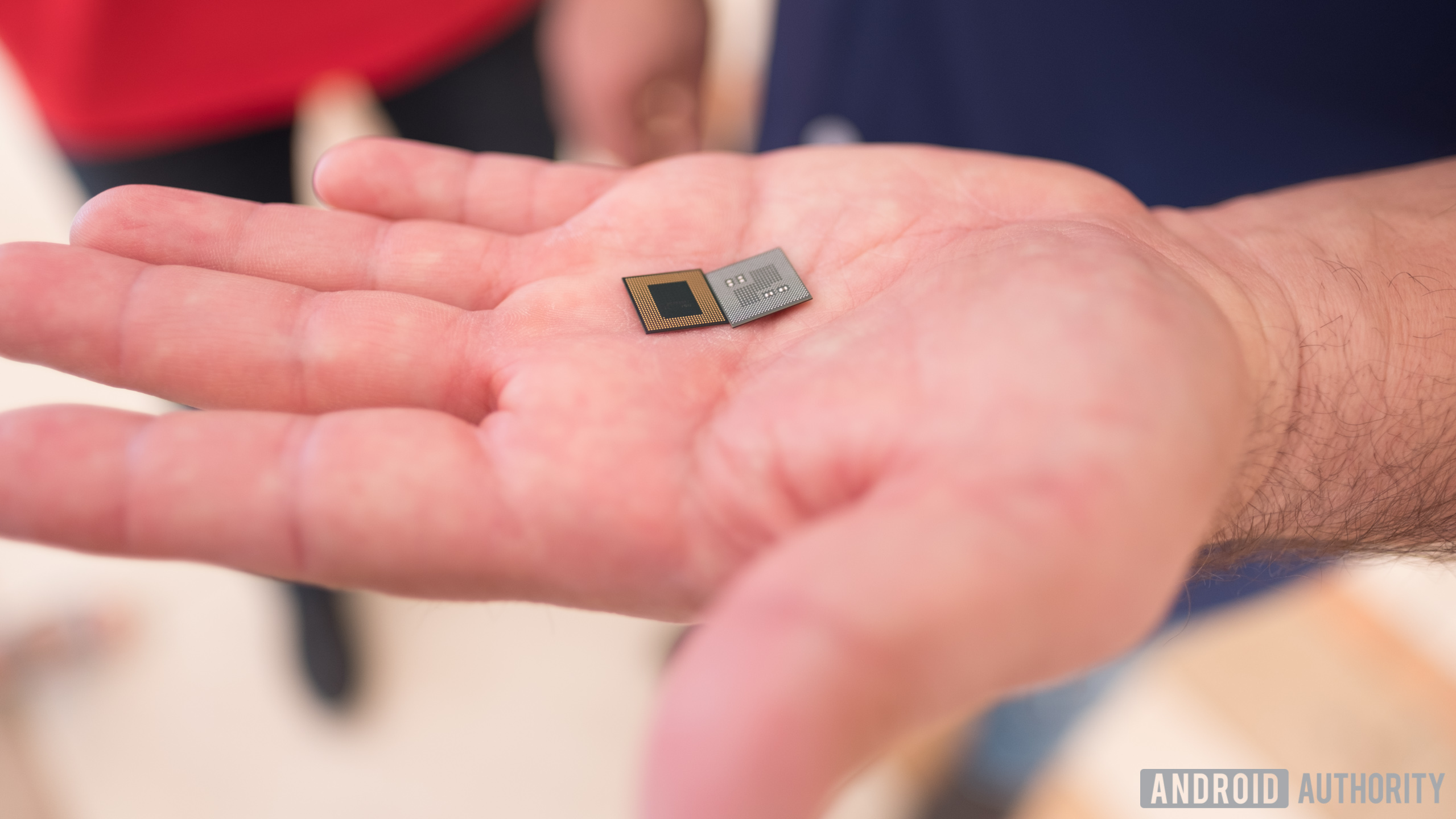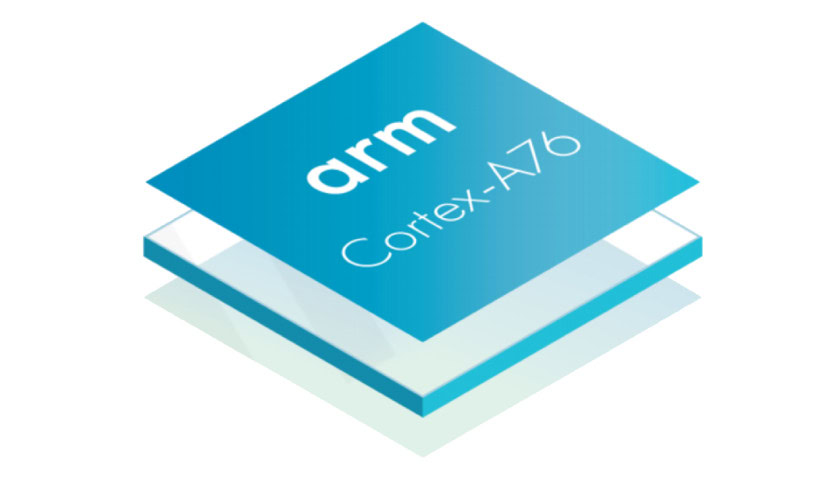
Samsung doesn't kick up much fuss when it launches a new mobile processor, but chip development is a major part of the company's business — especially given the number of smartphones it sells every year. Samsung's mobile processors, released under the Samsung Exynos brand, cater to handset budgets across the market, from its flagship Galaxy S phones to budget J series handsets.
Here's what you need to know about the Samsung's current range of SoCs.
Meet the Exynos flagships
You'll always find two variants of each high-end Samsung smartphone, one packing a Qualcomm Snapdragon processor for the U.S. market and another equipped with the company's latest high-end Samsung Exynos chip for the global market.
The Exynos 9810 is Samsung's current flagship SoC. It powers the Samsung Galaxy S9 and is the company's equivalent of the more common high-performance Qualcomm Snapdragon 845. The slightly older Exynos 8895 can be found in the Galaxy Note 8 and Galaxy S8 handsets.
Samsung is the only Android chip manufacturer still working on a fully custom in-house CPU design for its flagship products, known as Mongoose or M cores. The Exynos 9810 features the third generation of this design.
Samsung's Mongoose boasts a wider throughput design than Arm's Cortex cores and comes paired with significantly more cache than other chips in the Android ecosystem. This is a similar approach to Apple's custom CPU design. Jargon aside, this makes the Samsung M cores considerably bigger than their Arm Cortex counterparts and higher performing too, but there have been some issues with performance and efficiency as a result.
| Exynos 9810 | Exynos 8895 | Snapdragon 845 | |
|---|---|---|---|
| CPU | 4x Mongoose M3 @ 2.9GHz 4x Cortex-A55 @ 1.9GHz | 4x Mongoose M2 @ 2.3GHz 4x Cortex-A55 @ 1.7GHz | 4x Kryo 835 (Cortex-A75) @ 2.8 GHz 4x Kryo 835 (Cortex-A55) @ 1.7 GHz |
| GPU | Mali-G72 MP18 | Mali-G71 MP20 | Adreno 630 |
| RAM | LPDDR4X | LPDDR4X | LPDDR4X |
| Modem | 1.2Gbps down, Cat18 6CA 200Mbps upload, Cat18 2CA | 1.0Gbps down, Cat16 5CA 150Mbps upload, Cat13 2CA | 1.2Gbps down, Cat18 5CA 150Mbps upload, Cat13 2CA |
| Cameras | 24MP single, 16+16MP dual | 28MP single, 16+16MP dual | 32MP single, 16+16 dual |
| Process | 10nm FinFet | 10nm FinFet | 10nm FinFet |
Samsung was one of the first to adopt Arm's big.LITTLE CPU core design ethos, and this remains in place to this day. Unfortunately, the use of a custom CPU core prevents Samsung from utilizing Arm's DynamIQ core cluster technology, even though its latest processor utilized low power Cortex-A55 cores. On the GPU side, you'll find a large group of Arm's latest Mali GPU cores for fast gaming performance.
As you would expect from a flagship series, the Exynos 9 range includes all the bells and whistles. These chips are built on Samsung Semiconductors' manufacturing processes, the latest being its second generation 10nm node. Samsung also packs in its fastest 4G LTE modems, high resolution and dual camera support, LPDDR4X RAM and UFS memory compatibility, and the usual assortment of Bluetooth and Wi-Fi connectivity options.
There's no dedicated AI hardware, though Samsung supports machine learning acceleration on its high-end chips. It uses a Vision Processing Unit (VPU) for object detection, as well as GPU math optimizations.

Mid-tier options
Samsung has made big strides in its mid-tier options lately, and the latest products have helped to bridge the gap with the company's flagship tier. These products fall under the company's Exynos 7 series branding, although the latest Exynos 9610 throws a spanner in the works.
The Exynos 9610 hasn't appeared in any smartphones yet, but it's essentially an iterative improvement over the Exynos 7885, which powered 2018's Galaxy A smartphones. It's a very similar chip, boasting a high performance big.LITTLE Cortex-A73 and A55 combination, which would have passed for a high-end design just over a year ago. The GPU department is definitely cut down compared to the Exynos 9 series, but still plenty powerful for some casual gaming.
| Exynos 9610 | Exynos 7885 | Exynos 7880 | Snapdragon 660 | |
|---|---|---|---|---|
| CPU | 4x Cortex-A73 @ 2.3GHz 4x Cortex-A53 @ 1.6GHz | 4x Cortex-A73 @ 2.2GHz 4x Cortex-A53 @ 1.6GHz | 8x Cortex-A53 @ 1.9GHz | 4x Kryo 260 @ 2.2GHz 4x Kryo 260 @ 1.8GHz |
| GPU | Mali-G72 MP3 | Mali-G71 MP2 | Mali-T830 MP3 | Adreno 512 |
| RAM | LPDDR4X | LPDDR4X | LPDDR4 | LPDDR4 |
| Modem | 600Mbps down, Cat12 3CA 150Mbps upload, Cat13 2CA | 600Mbps down, Cat12 3CA 150Mbps upload, Cat13 2CA | 300Mbps down, Cat7 3CA 100Mbps upload, Cat7 2CA | 600Mbps down, Cat12 3CA 150Mbps upload, Cat13 2CA |
| Cameras | 24MP single, 16+16MP dual | 21.7MP single, 16+16MP dual | 21.7MP single | 25MP single, 16+16 dual |
| Process | 10nm FinFet | 14nm FinFet | 14nm FinFet | 14nm FinFet |
Older entries in the Exynos 7 series weren't as powerful in the CPU department, utilizing an octa-core Cortex-A53 design rather than a more powerful dual cluster topology, like Exynos 7880 which powered 2017's Galaxy A7 and A5.
If you're after a comparison to Qualcomm, the Exynos 7 series goes up against the Snapdragon 710 and 600 series of chips. Although matching up the exact models depends on the performance point, as there's quite a bit of variation in these mid-range products. Even so, Samsung leverages its foundries to offer small manufacturing nodes, as well as including competitive modem packages for fast LTE speeds and support for dual cameras.
Budget processors
The Exynos 5 series and older 7 series models make up Samsung's budget tier SoCs. You'll find both octa-core and even quad-core Cortex-A53 CPUs here, slower LPDDR3 memory, and display support for just 720p rather than 1080p panels and above. Handsets powered by this tier of Samsung's chips include last year's Galaxy A3, J3, and Xcover 4.
Samsung doesn't cheap out on all of the extra features though. The modems in this category still support carrier aggregation for faster 4G downloads, and some chips even support dual and higher resolution camera sensors. Samsung Semiconductor's industry-leading technologies are still utilized in manufacturing to keep the chips cool and power efficient, as these chips are still built on a rather fancy 14nm FinFET node.
| Exynos 7872 | Exynos 7870 | Exynos 7570 | Snapdragon 450 | |
|---|---|---|---|---|
| CPU | 2x Cortex-A73 @ 2.0GHz 4x Cortex-A53 @ 1.6GHz | 8x Cortex-A53 @ 1.6GHz | 4x Cortex-A53 @ 1.4GHz | 8x Cortex-A53 @ 1.8GHz |
| GPU | Mali-G71 MP1 | Mali-T830 MP1 | Mali-T720 MP1 | Adreno 506 |
| RAM | LPDDR3 | LPDDR3 | LPDDR3 | LPDDR3 |
| Modem | 300Mbps down, Cat7 2CA 150Mbps upload, Cat13 2CA | 300Mbps down, Cat6 2CA 50Mbps up | 150Mbps down, Cat4 2CA 50Mbps up | 300Mbps down, Cat7 2CA 150Mbps upload, Cat13 2CA |
| Cameras | 21.7MP single | 16MP single, 8+8MP dual | 13MP single | 21MP single, 13+13 dual |
| Process | 14nm FinFet | 14nm FinFet | 14nm FinFet | 14nm FinFet |
They're not all boring chips, either. The latest Exynos 7822 introduces a two-by-four big.LITTLE CPU core combination. The addition of two Cortex-A73 cores will offer some notable performance improvements for lower cost handsets, which have traditionally been based solely on power-efficient Cortex-A53 cores. The SoC also benefits from a new Mali-G72 GPU, but the single-core implementation keeps this firmly in the low-end market. Overall, this model breaches into what the mid-tier is typically capable of and should make for some snappy low-cost handsets.
In addition to the above, there are rumors Samsung is working on a custom GPU design. With a custom CPU already under its belt, this is certainly within the company's wheelhouse and it could want its own graphics chip for a number of reasons. However, if such a design exists, it will likely be a low-end product first, and it may not even be ready for a number of years.
We'll have to wait to see if the company has a new high-end SoC release planned in time for the Galaxy Note 9 or if the S10 will see the next leap forward in performance.
Up next: Spreadtrum processors – What you need to know
from Android Authority https://ift.tt/2uZlVO2
via IFTTT



Aucun commentaire:
Enregistrer un commentaire